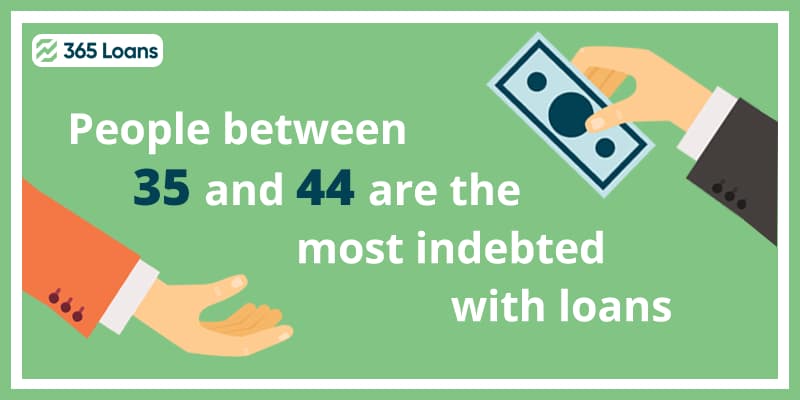A personal loan is a type of debt incurred when an individual borrows money from a bank, credit union, or online lender. In most cases, the lender adds an interest rate to the loan.
Individuals taking advantage of such loans should pay back the initial money they borrowed with the interest rate in a monthly payment or so-called installments. The interest rate, payback time, and other loan terms vary based on the type of personal loan.
Knowing what types of personal loans are available and how they work will help you determine which one is right, to make the financially intelligent decision.
What are the different types of personal loans?
There are two main types of personal loans: unsecured loans, which do not require collateral, and secured loans.
Loans differ with the interest rate too. For example, there are loans with a fixed interest rate that do not change over time. Opposite to this, there are variable interest rate loans, where the rate changes. Other types include co-sign and debt consolidation loans and personal lines of credit.
When taking a personal loan, you should consider its purpose and choose the kind of loan that best fits your needs and financial situation.
Below, we will review different types of personal loans and discuss things you need to be aware of when borrowing money.
Unsecured personal loans
An unsecured loan does not require collateral, such as your car or home. However, it makes this loan riskier to give to the lenders, who might offer you higher annual interest rates than the secured ones. Interest rate and money you can borrow when taking an unsecured loan depends on your credit score. Usually, the period for repayment varies from one to six-seven years.
Usually, such loans are the best for increased expenses and purchases, as they tend to have better interest rates than credit cards.
When taking such a loan, you need to consider the interest rate and monthly payment you will owe to ensure that it is affordable for your budget.
Secured personal loans
Secured personal loans require collateral to back up the loan. You can “secure” the money you borrow with a certificate of deposit, your car, or other property.
This type of personal loan comes with lower interest rates since it is less risky for the lenders as an asset guarantees the repayment of the debt. If you cannot repay the money, the lender has the right to seize the collateral. For example, a mortgage is a type of secured loan that a person takes against their house. If the borrower cannot pay the money back, they will lose the house.

You can take a personal loan when you are sure that you can pay it back and will not lose your collateral. If you are confident in your financial abilities to pay the loan back, you can save money on interest with secured loans.
Fixed-rate personal loans
A fixed-rate loan is a type of personal loan with fixed monthly payments. When you are taking such a loan, the lender calculates the annual interest rate and, based on it, determines the amount for monthly payment. This amount will stay the same until you repay the loan wholly.
You might prefer fixed-rate loans if you want to know the amount you owe each month precisely in advance. In addition, as fixed-rate loans come with consistent payments, it is easier to budget without worrying that the amount of money will change.
Variable-rate personal loan
As the name suggests, this personal loan does not have a fixed interest rate. Instead, the rate is tied to the benchmark rate that the banks set. Therefore, as the benchmark rate fluctuates, the rate on your loan, monthly payment, and total interest costs change too.
Still, there is a benefit of variable-rate loans. Usually, they have a lower interest rate than fixed-rate loans. Also, the loan might have a cap to determine how the rate can change over the time of the loan.
Co-sign loans
Co-sign personal loans are for people who have a thin credit history or do not have one at all. In such a case, you might either not qualify to take a loan at all. Or you might get a loan with unfavorable terms, such as a high-interest rate.
Adding a co-signer to your loan acts as insurance to the lender as if you will not be able to repay the money, the co-signer will. Therefore, it is always better to add a co-signer with solid credit when taking this personal loan. This way, you might be able to get a lower interest rate.
Debt consolidation loans
If you have multiple debts, you can consolidate them into one loan. With the debt consolidation loan, you are paying all your debts, and instead of several loans, you have only one. With it, you can simplify your payments as you will not have to make several payments for different loans. Instead, you only make one monthly payment for the consolidated loan.

Before taking the debt consolidation loan, you must ensure that it has a lower interest than the other loans. Also, consider the monthly payment amount to pay it without issues.
A personal line of credit
A personal line of credit is also a type of personal loan, but with its nature, it is more like a credit. Instead of getting a lump sum of money, you get access to a credit line. You can borrow money within the limits of your credit line when you need it. At the same time, you only pay interest on borrowed money.
What is the best type of personal loan?
As you can see, there are a few types of personal loans. Unfortunately, there is no such term as the ultimate best loan that is good for everybody.
The best way to get a loan with favorable terms is to collect information, look around and choose the right option for you. Then, select the type of loan based on your financial needs and capabilities, and make sure you get the loan you can afford to pay back.






